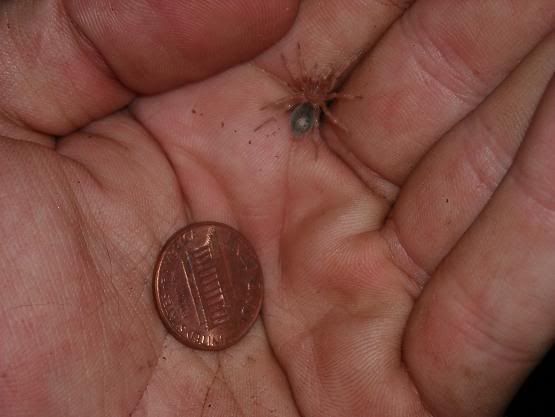Morris23352
Arachnopeon
- Joined
- Oct 5, 2010
- Messages
- 16
Should i powerfeed my slings or just let them grow slow. I mean why wouldnt you powerfeed? Whats the pro's and con's of both. I would appreciate your opinions
Every chance it gets.Hard question to answer, but "roughly" how often would a T feed in the wild?
I fully agree.There is no conclusive link between feeding regime and life span.
Excessive feeding does lead to an overly large abdomen, which in turn makes the T very fragile and susceptible to rupture.
Everything else mentioned is just opinion.
My opinion, I feed my slings regularly and do not allow them more than a few days between feedings. My logic: they are growing and developing and I want to be sure they all the nutrition they need to grow healthy, strong, and large.
Agreed. Since we have no idea what an average lifespan of some of these breeds in captivity are, I hesitate to say it shortens the life expectancy. In theory it sorta makes sense, but that is how most myths/ misconceptions get started, by taking something that sorta makes sense and making an absolute statement out of it; without any proof other than, other people doing the same thing.There is no conclusive link between feeding regime and life span.
Excessive feeding does lead to an overly large abdomen, which in turn makes the T very fragile and susceptible to rupture.
Everything else mentioned is just opinion.
My opinion, I feed my slings regularly and do not allow them more than a few days between feedings. My logic: they are growing and developing and I want to be sure they all the nutrition they need to grow healthy, strong, and large.
yes there is. it is widely accepted in science that calorie limited diets result in longer lifespan. you really can't argue that. there are tons and tons of papers out thereThere is no conclusive link between feeding regime and life span.
Right, none at allThere is no conclusive link between feeding regime and life span.
How did you change your name?i appreciate this thanks.
__________________
<Formerly pinktoe6>
http://www.arachnoboards.com/ab/showthread.php?t=138788How did you change your name?
As far as I knew,there are experiments that suggest that calorie restriction does longer the life span on humans.yes there is. it is widely accepted in science that calorie limited diets result in longer lifespan. you really can't argue that. there are tons and tons of papers out there
it's true for animals as high as mice, without question, via experiments. tons of lesser animals have had papers you can google very easily. to think our tarantulas are different from tons of animals around them is silly. that have even been correlative studies in humans that demonstrated definite positive correlation between calorie restriction and increased life
this is actually a pretty fundamental aspect of like, a general understanding of biology. scary.
